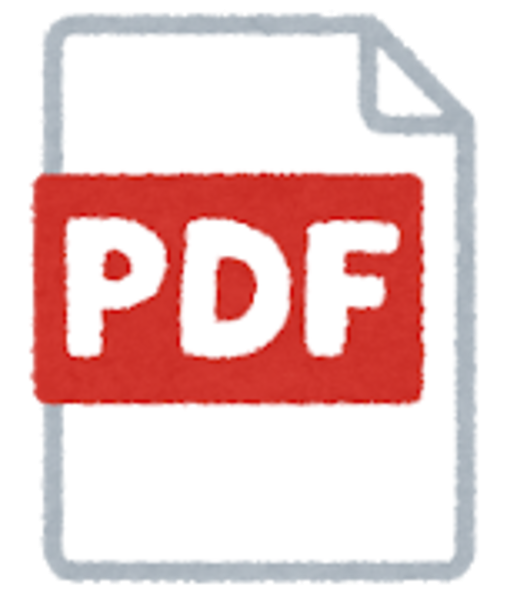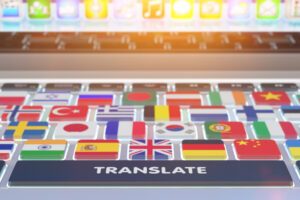Note: This blog post was originally written in Japanese for our Japanese website. We used our machine translation platform Translation Designer to translate it and post-edit the content in English. The original Japanese post can be found here.
"Keeping costs down as much as possible within the set budget" — this is probably on most people's wish list for those who need professional document translation and localization services. As more businesses expand globally, the demand for translation and localization services continues to grow. However, while more documents need to be translated, we often hear a strong priority to keep translation costs low.
For writing this post, our project manager who coordinates Japanese to English translation projects shared some tips to reduce translation costs without degrading the quality. Hopefully, this post will make your wish come true!
What to do before requesting document translations
If you have a document that needs translation, where should you begin?
Many would probably think, "We just ask a translation company for a quote, right?" However, if you request a translation quote without looking through the document, there's a chance that unnecessary file preparation costs will be included in the quote. In order to avoid these unnecessary costs and reduce the estimated document translation fee, it's better to consider the following points before requesting a quote.
- Are there any parts that don't have to be translated?
- Is your document in an editable file format?
- Do you want a quality assurance review after the document has been translated?
Now, let's take a closer look at each item.

Are you sure you want everything translated?
The first thing to consider is to make sure that your document does not contain any parts that don't need translation. Take a moment to think if every single word in your document needs to be translated. By asking this question, you may notice that the whole document doesn't have to be translated. Simple as that, this can lead to keeping the estimated costs low.
For example, in our Japanese to English document translation projects, we sometimes receive documents that include parts that are already in English, such as English references and citations. It is also common that basic company information such as the company philosophy and profile, which may be used across various documents, has already been translated into the target language and can be reused. In such cases, since the documents include parts that do not need translation, a quote will turn out higher than the actual translation cost, which is a waste of money.
So, before asking for a quote, it's always good to search for related documents to see if any parts of the document you're requesting have already been translated.
By the way, the notes section of a PowerPoint presentation tends to be overlooked. We often get translation requests for PowerPoint presentations, but sometimes our customers have unnecessary speaker notes left in their slides without noticing. If not instructed, translation companies will include the notes section in a translation quote. Make sure you check if you need the notes section to be translated before making the request.
By narrowing down the parts that actually need translation, you can make a big difference in translation costs.
What is the file format? Is it editable?



Next thing to check is whether your document can be edited without a special application.
Projects with Word or Excel documents can be started immediately. But files that require special applications for editing, such as PDF or InDesign, need additional process, and extra cost might be added to the estimate. This is because these files need to be converted to an editable file before moving on to the translation work, and this additional step often adds to the cost. To reduce unnecessary costs, make sure that your document is in an editable file format. If not, check if you can convert it into an editable format. (For example, if you want a PDF file to be translated, look for its original Word file.)
Also, you have to be careful if your document contains images. It is important to first examine whether the text in images need to be translated. If so, make sure that the text in images are editable. If not editable, this will add on two extra steps: 1) extracting and translating the text in images and 2) pasting the translated text into each image or editing the entire image one by one. Taking these extra steps, again, increases the cost. For this reason, if you want to include the text in images to be translated, check if you have the source files of the images. Being able to directly edit the source files can change the estimated costs significantly.

Can it be a draft translation? Is a review required?
Finally, it is important to confirm what translation quality you want for your document.
Usually, professional translation services (human translation services) have the following service levels:
• Draft translation, which is translation only.
• Standard translation, which is translation with a full review afterward.
In standard translations, after a translator delivers the translated document, a bilingual reviewer carefully checks the translated document for misinterpretations and missing translations by comparing it with the original document. In draft translations, the translator self checks the translated document for typographical errors and spelling mistakes. There is no review process afterward to catch errors in detail in a full check. Since this service level has one less step, costs are lower than standard translations.
Therefore, you can optimize the costs by selecting draft translations or standard translations according to the quality required for your document.
For example, draft translations are not suited for official documents and documents used for public announcements or submitted externally. However, if your document is intended for internal use and doesn't require such a quality, a draft translation can be an option to save translation costs.
In addition, you can even reduce costs by incorporating machine translation instead of human translation. Check out our blog post on machine translation with post-editing for more information on saving costs using this method.

Going for a more advanced approach? Use a translation memory
So far, we shared three tips to save costs, but you can further reduce costs using a more advanced approach.
This approach is especially effective if you have a large number of documents to translate and the content is similar. (This case is common when translating manuals of machinery or equipment.) Request a translation company to translate using a computer-assisted translation (CAT) tool. By doing so, you can create a translation memory and reduce translation costs.
With a CAT tool, once sentences are translated, they are saved in a translation memory. This function allows you to reuse translations when a same sentence or similar sentence appear in your document. Utilizing a translation memory reduces translators' workload. Reduced workload means reduced costs. If you have a large amount of text, the more you translate, the more memory you have. Hence you might be able to significantly reduce the total cost.
Also, creating a translation memory increases the efficiency of the translation project itself. If a revised version of the document that you already translated comes out, you can use the translation memory for existing translations and then translate only the changed parts. By using an automatic detection function of a CAT tool, there is no need to check the newly added parts one by one.
On the other hand, there are some disadvantages for using CAT tools. First of all, not all translators use CAT tools. That means if you cannot schedule translators who use CAT tools, you may have to wait until they become available. In addition, even if you have a large-scale project, if it doesn't contain much similar phrases, you will not benefit from having a translation memory. Moreover, it costs money to maintain a translation memory. If the amount of text that need to be translated is small, the costs may be higher than what you save.
Based on the above disadvantages, when requesting translation companies for a quote, ask them to quote in both cases: A) creating a translation memory and translating with a CAT tool and B) translating without a translation memory and not using a CAT tool. We recommend that you consider the conditions such as turnaround time along with the above advantages and disadvantages.
Summary
Finding cheap translation companies is not the only solution to get your translations done at a low cost. Translations are done manually by human, which means extremely low prices can have a significant impact on the quality of your translations.
It's better to use different translation service levels depending on the situation and project, while incorporating the tips to save costs without degrading the translation quality.
Kawamura's translation services
Kawamura International delivers consistent translation quality in both short-term and long-term projects by its quality assurance based on statistical quality control methods. We are certified for ISO 17100, the international standard for translation services, and ISO 27001 (ISMS certification), the international standard for information security. So, sit back and relax while we take care of your highly specialized documents.
We use all major CAT tools and are experienced in translating with translation memories (and also creating and maintaining them). Kawamura's strength is the ability to flexibly respond to various needs and propose the optimal solution to its customers. Feel free to reach out to us for professional translation service requests or if you have any other questions about translation and localization services in general.
_CMYK_OL.png)

